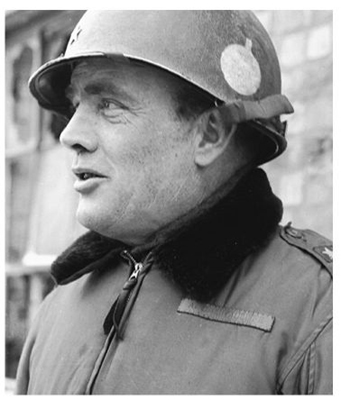How Hitler Could Have Won World War II (44 page)

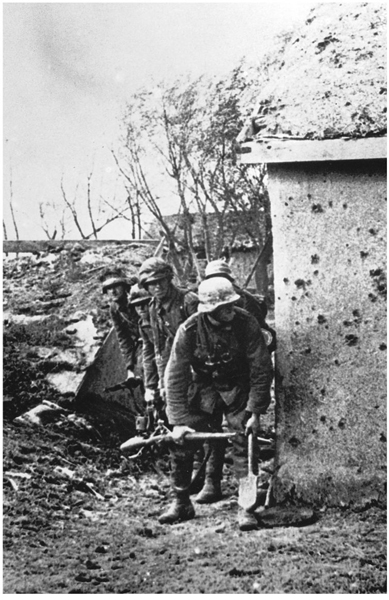
German soldiers crouch behind a bullet-pocked wall during fighting in the Crimea in November 1941.
(AP/Wide World Photo)
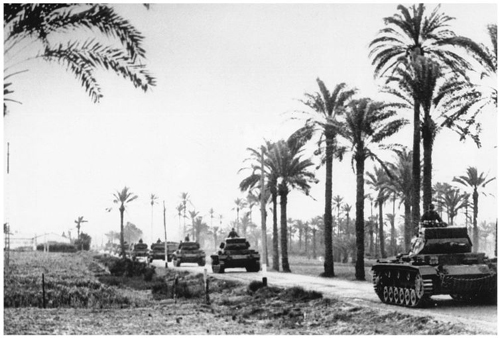
German panzers roll through Libya toward the battlefront on the Egyptian frontier in April 1941. The German commander, Erwin Rommel, was preparing for a British offensive there around Sollum and Halfaya Pass.
(AP/Wide World Photo)
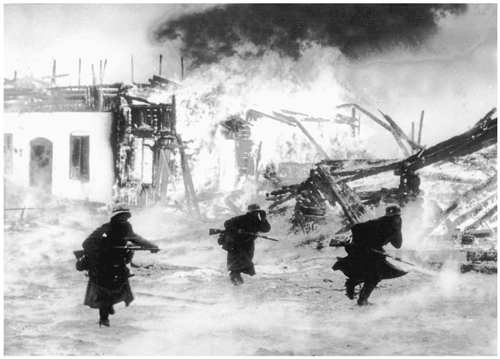
German troops rush through a burning Russian village in the early stages of the invasion in June 1941.
(Topham/The Image Works)
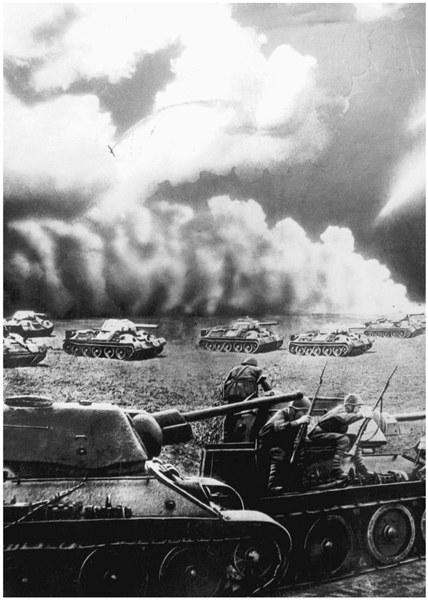
Soviet T-34 tanks advancing into action. The T-34, with good speed, sloping thick armor that could deflect many shells, wide tracks that could move well in mud or snow, and a high-velocity 76-millimeter cannon, was the most successful tank in World War II. Panzer leader Heinz Guderian attributed the collapse of the German attack on Moscow in December 1941 to the T-34. Later the Soviets mounted an even more powerful 85-millimeter gun on the tank.
(Topham/The Image Works)
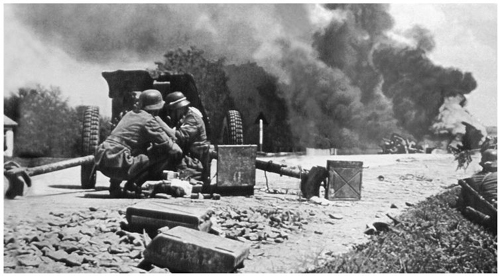
A German antitank gun crew in action in Russia in the summer of 1942. German armored forces could generally outmaneuver Soviet defenders because German organization and leadership were normally superior. This allowed German panzers to make astonishing advances despite heavy opposition. Adolf Hitler forfeited this great advantage of maneuverability by requiring German forces to fight a close-in, street-by-street battle in Stalingrad and by demanding that Germans defend every inch of the territory they occupied.
(Topham/The Image Works)
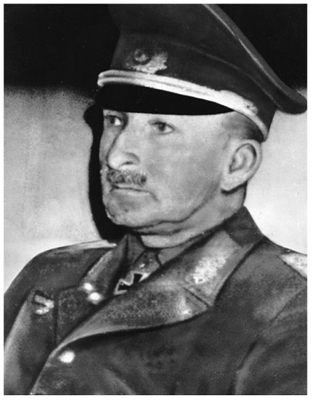
General Hans-Jürgen von Arnim, commanding the German 5th Panzer Army in Tunisia, was envious of Erwin Rommel's fame and withheld forces Rommel might have used to sweep behind the Allied armies and force their surrender or retreat in the battle of Kasserine Pass in February 1943.
(Topham/The Image Works)
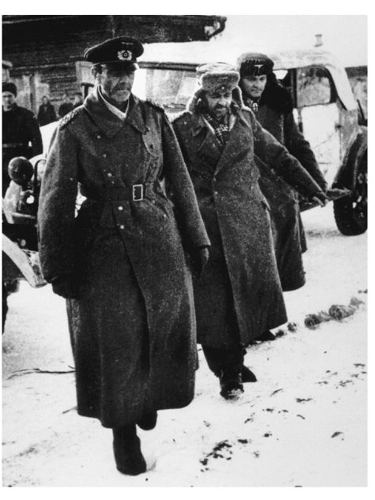
Friedrich Paulus
(foreground),
commander of the German 6th Army at Stalingrad, shortly after he surrendered on January 31, 1943. Hitler promoted Paulus to field marshal on the assumption that he would shoot himself to avoid capture. He did not.
(Topham/The Image Works)
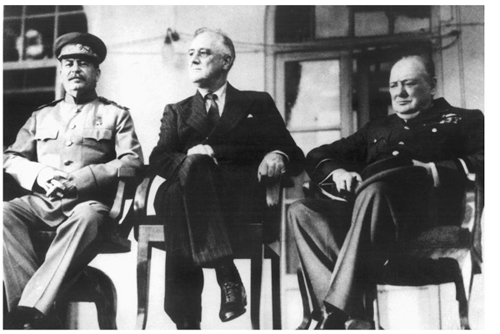
The major Allied leaders at the Teheran conference in late November 1943. Seated
(from
left):
Soviet dictator Joseph Stalin; American president Franklin D. Roosevelt; and British prime minister Winston Churchill.
(Topham/The Image Works)
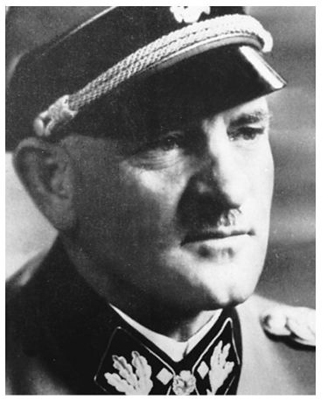
German SS General Sepp Dietrich, commander of the 6th Panzer Army in the Battle of the Bulge, December 1944.
(Topham/The
Image Works)
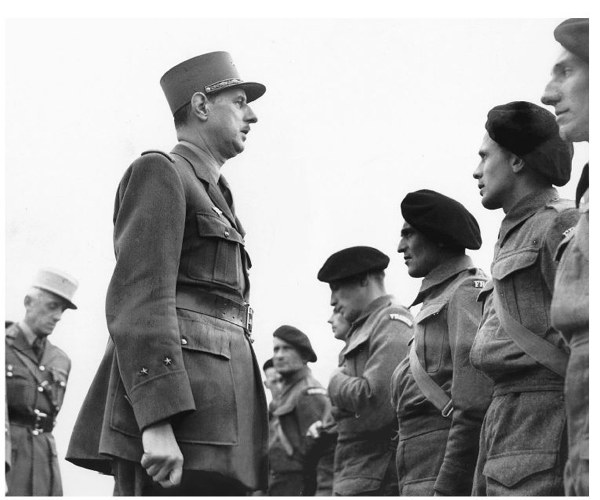
General Charles de Gaulle inspects French soldiers who escaped from German prison camps and joined the Free French movement, which de Gaulle led. De Gaulle received wild acclaim when he arrived in Paris with liberating forces on August 25, 1944.
(Topham/
The Image Works)
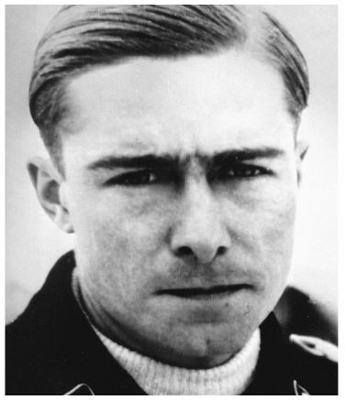
SS Lieutenant Colonel Joachim Peiper, whose battle group massacred eighty-six captured and unarmed Americans and a number of Belgians at Malmédy during the Battle of the Bulge in December 1944.
(Topham/The Image Works)
